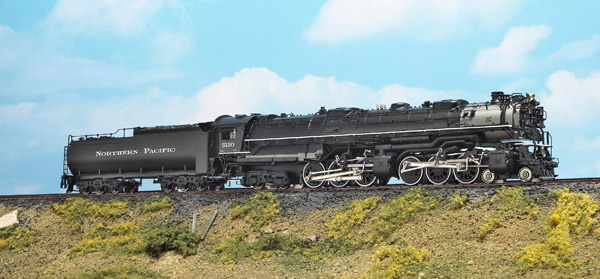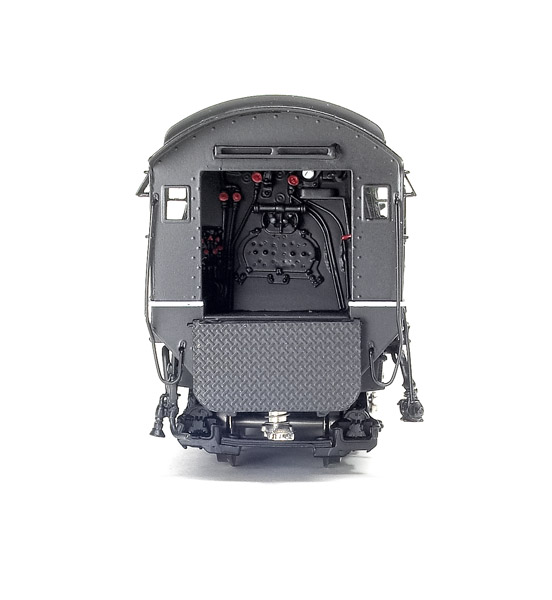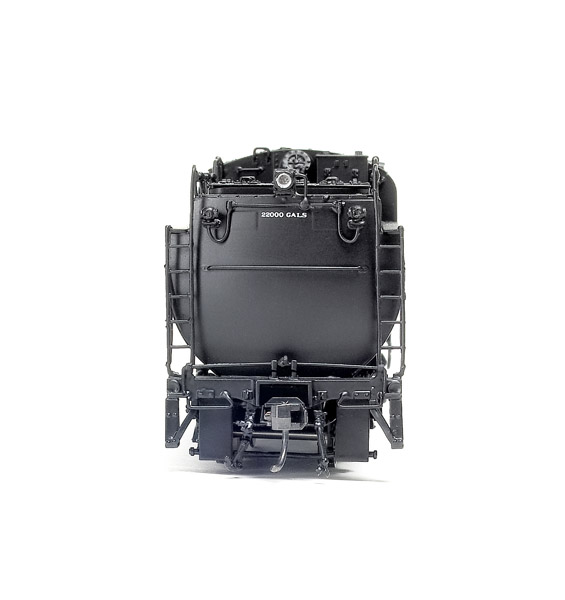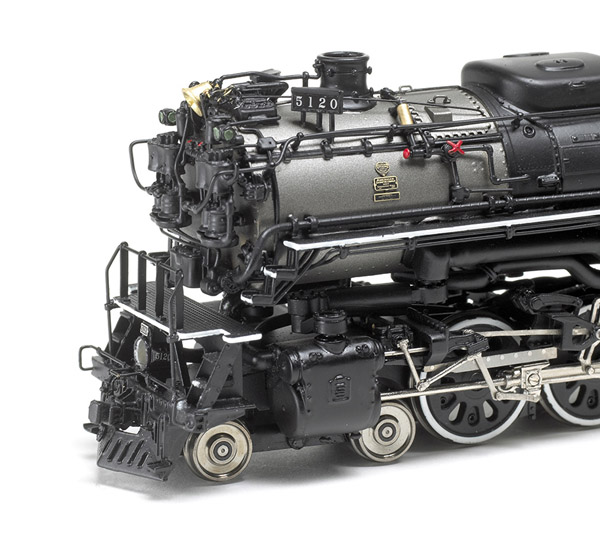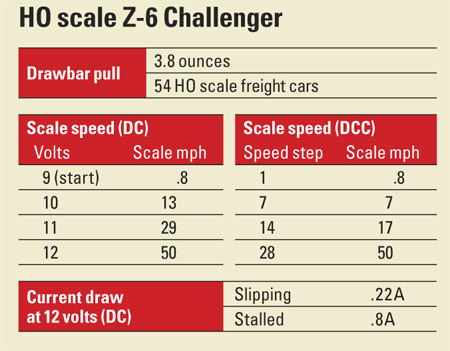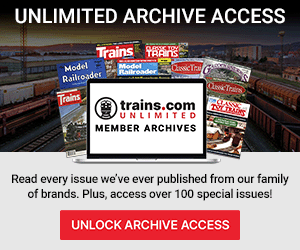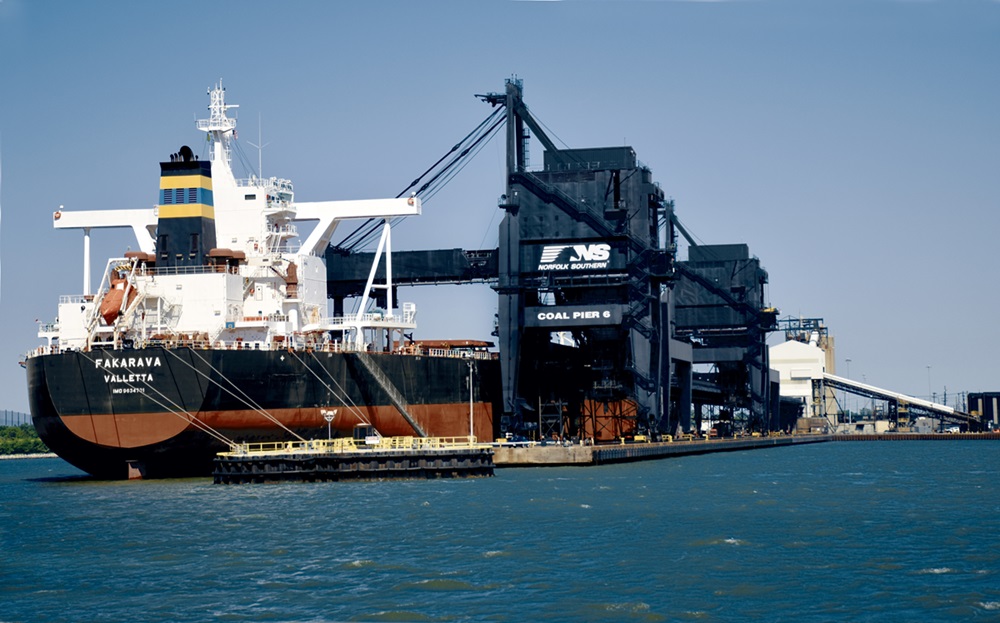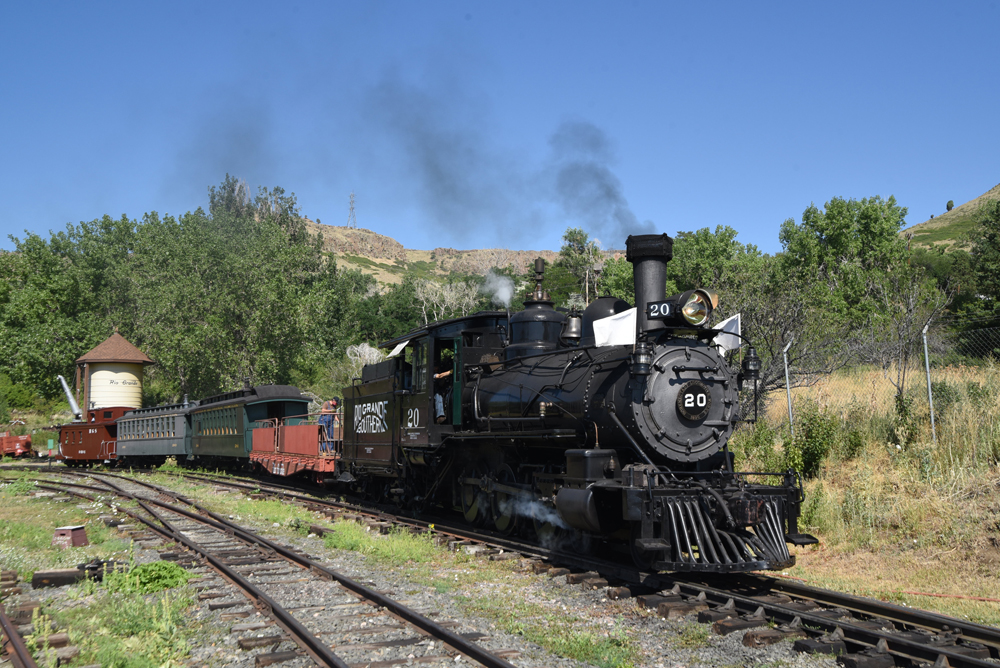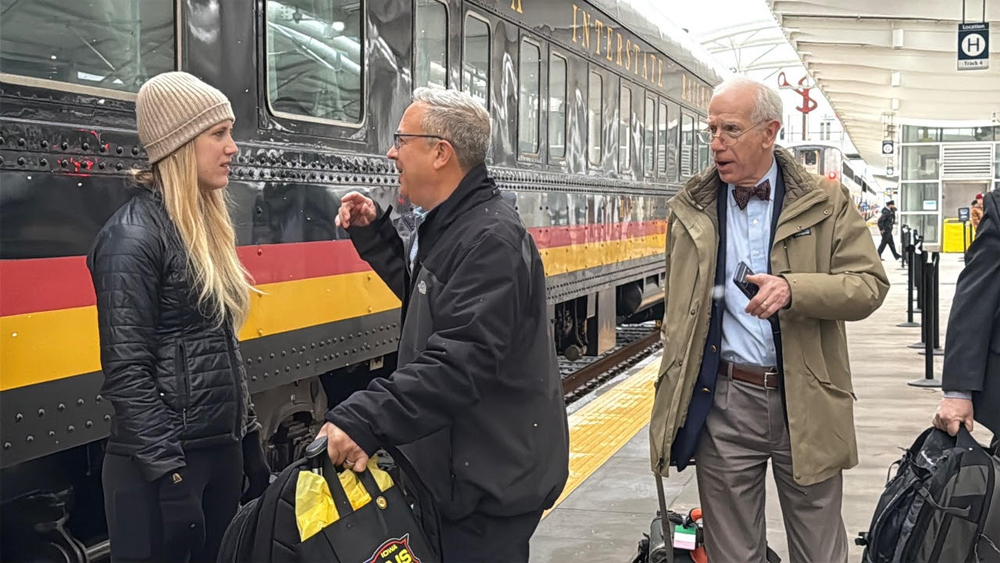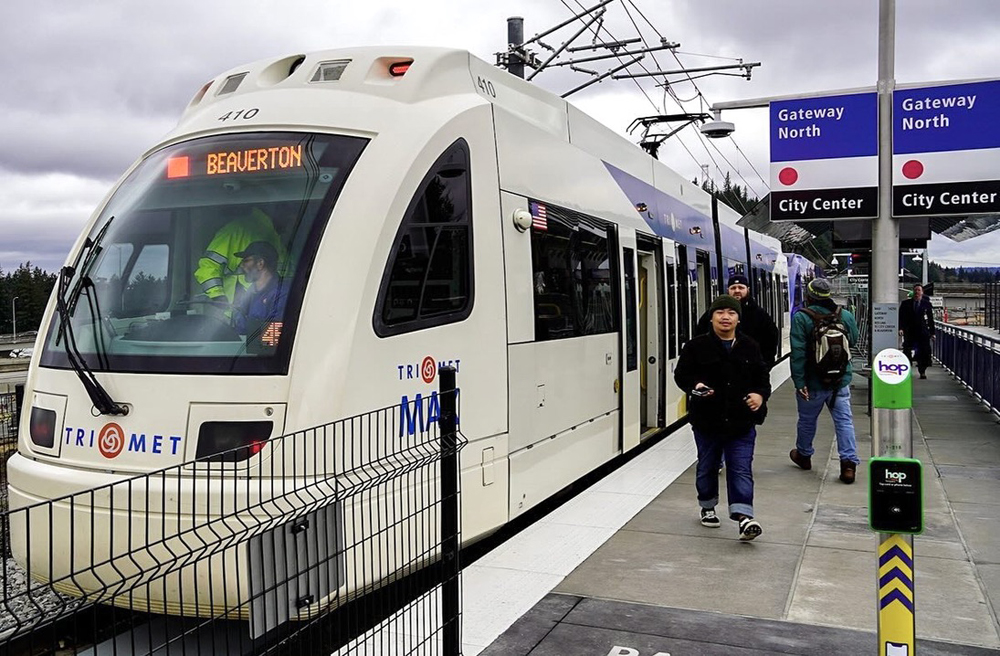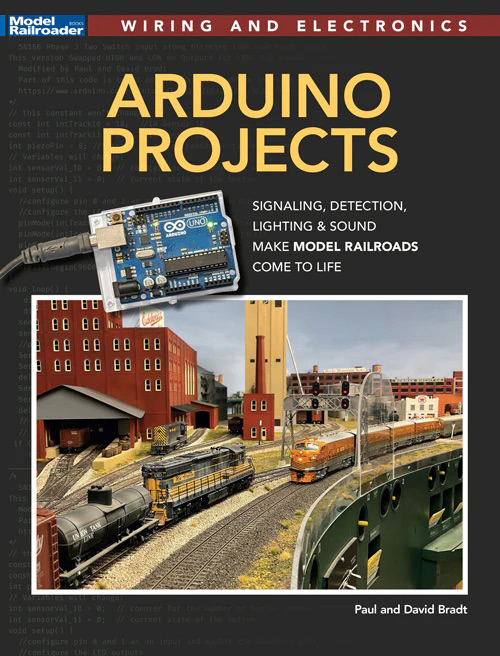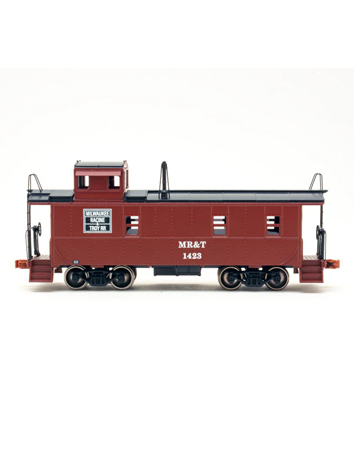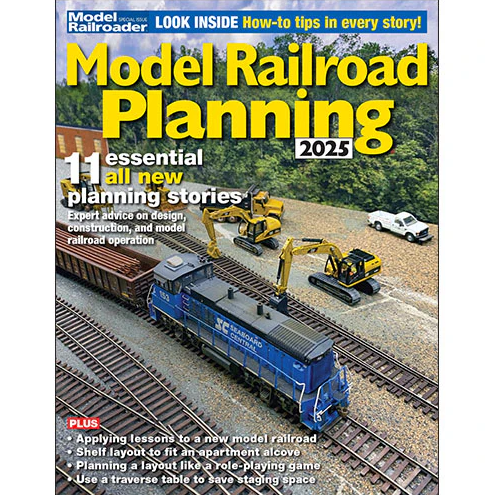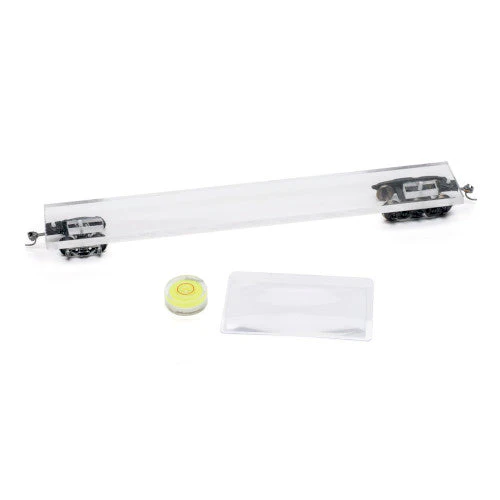The prototype. Many model railroaders know about the Union Pacific’s fleet of 4-6-6-4 simple-articulated locomotives, but a successful fleet of Challenger-type engines also served on the Northern Pacific Ry. in the late steam era.
The Northern Pacific Ry. received 12 simple-articulated Challenger 4-6-6-4 locomotives from Alco in 1936. The NP purchased nine more Challengers in 1937. These steamers were classified Z-6 by the NP and could haul trains at 50 mph up steady 1 percent grades.
The 4-6-6-4s led mainly fast freight and perishable trains on the NP’s lines west of Livingston, Mont. The Challengers did occasionally pull passenger trains when required to protect schedules.
Six Z-6 Challengers were delivered to the Spokane, Portland & Seattle in 1936. These locomotives were identical to those on the NP, although the SP&S engines were oil burners. Two SP&S Z-6s were bought by that road’s parent company, the Great Northern Ry., in 1937, but eventually returned to the SP&S.
The class Z-6 Challengers served long careers until the end of steam on the NP in the late 1950s.
The HO scale locomotive and tender are mainly brass with excellent engraved detail. The model features dozens of separately applied metal parts, including all handrails, throttle linkage, exposed sand lines, whistle, bell, Worthington SA feedwater heater, dual air pumps, and all other boiler appliances.
The locomotive cab has a detailed interior with clear window glazing and an accurately engraved backhead with separately applied and painted valves and gauges. The hinged cab apron has engraved safety tread.
The tender has engraved wood plank detail, opening water hatches, and a coal load. The six-wheel trucks have die-cast metal truck sideframes that match prototype photos. Metal safety chains connect the trucks to the tender frame.
All the lettering on the model is straight and opaque. I could read the locomotive’s builder’s plates and patent plates under magnification. The build dates and serial numbers are correct for the prototype.
The pilot wheels on the model are unpainted. Painting the wheels black would improve the model’s appearance. The tender wheels are chemically blackened.
a gearbox on the second axle of each engine. The metal side rods transfer power to the other drivers.
The model’s die-cast metal frame is articulated like the prototype’s. The rear engine is rigid, while the front engine is hinged at the rear.
A metal drawbar connects the locomotive to a pin on the tender. The spacing between the tender deck and the back of the cab can be either one or two scale feet apart. Note that the closer spacing requires curves wider than the 30″ minimum radius.
The QSI Quantum DCC sound decoder and a downward-facing speaker are inside the tender. The tender has a wiring harness with a plug that connects to a six-pin socket under the locomotive cab. It’s a tight fit, and it took several attempts to connect it.
The speaker is enclosed, and the speaker housing didn’t rattle, even at maximum volume.
Most of the sound effects, including the air compressors, are automatic in DC. Out of the box, the exhaust sounds are synchronized to the motion of the drivers. I could also trigger the whistle and the bell using the direction switch.
If you purchase the QSI Quantum Engineer analog controller (available separately from QSI for $59.95) you can activate the decoder’s user-triggered functions as well as program some configuration variables (CVs).
I ran the model on a DCC layout with an MRC Prodigy Advance sound system and had more control and programming options. I could trigger all 12 of the functions including turning the headlight on or off, ringing the bell, blowing the whistle, and initiating a coupler crash sequence. I also simulated the sound of the cylinder cocks opening (function 7) and the cylinders blowing down as the locomotive got under way.
An extensive manual outlining all the model’s programming options in DC and DCC is available as a free download at www.qsisolutions.com.
In both DC and DCC the HO locomotive reached a top speed of 50 scale mph. This is close to the prototype’s normal in-service top speed.
I ran the model on our layout with a 20-car freight train. The locomotive ran smoothly through a 32″ curve and no. 6 turnouts on our Troy Branch layout.
Especially in DCC, the Sunset Models HO scale class Z-6 performs as good as it looks sitting still. The exquisitely detailed model should please the most discriminating fans of late-steam era locomotives.
Price: $1,249.95 (DCC sound), $1,199.95 (DC no sound)
Manufacturer:
Sunset Models, Inc.
22 Beta Court
San Ramon, CA 94583
www.3rdrail.com
Road names (two road numbers each): Northern Pacific; Great Northern; Spokane, Portland & Seattle
Era: 1940s to 1959 (as detailed)
Features:
Dual-mode DCC sound decoder (DCC version)
Canon motor with brass flywheel
Electrical pickup on all drivers and tender wheels
Metal RP-25 contour wheels in gauge
Minimum radius: 30″
Nine-pin DCC plug (DC version)
Operating knuckle coupler at correct height on rear of tender (Dummy coupler on pilot)
Sprung drivers
Weight: 2 pounds 61/2 ounces (Engine, 1 pound 12 ounces)





